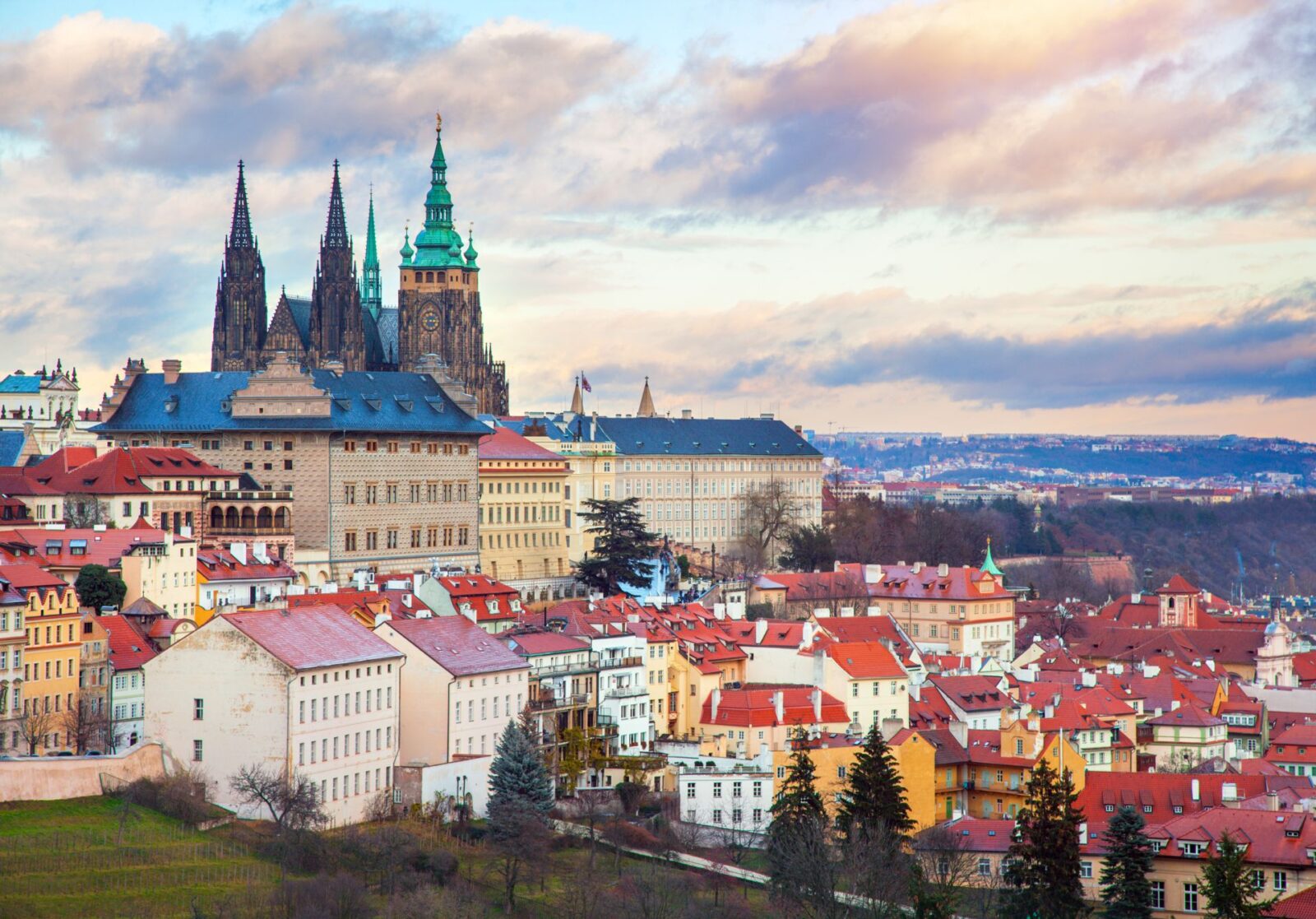Towering majestically on a hill overlooking the Vltava River, Prague Castle (Pražský hrad) is the largest ancient castle complex in the world, covering an impressive 70,000 square metres. This UNESCO World Heritage Site has been the seat of Czech kings, Holy Roman Emperors and Presidents of the Czech Republic for more than a millennium.
Historical Development
Prague Castle was founded around 880 by Prince Bořivoj of the Přemyslid family and has undergone numerous changes throughout its history. The original wooden fortress, protected by ramparts and wooden palisades, gradually transformed into the stone jewel we know today. Each ruling dynasty left its architectural mark, creating a unique blend of Romanesque, Gothic, Renaissance and Baroque styles.
Architectural splendour
The castle complex includes several remarkable buildings. St. Vitus Cathedral, the spiritual heart of the castle, was completed over nearly six centuries (1344-1929). Its towers, reaching a height of 96.5 metres, dominate the Prague skyline. Golden Lane, a charming alley of small, colourful houses, once served the castle guards and craftsmen and later attracted artists and writers, including Franz Kafka, who lived here in House 22 from 1916-1917.
The Royal Gardens and Cultural Spaces
The Royal Garden, founded in 1534 by Ferdinand I, is one of the most beautiful Renaissance gardens outside Italy. The Ballroom, the Summerhouse and the Royal Pavilion show the refined lifestyle of the Renaissance nobility. Even today, these spaces host important state events and cultural events, thus maintaining their contemporary relevance.
Modern Relevance
Today, Prague Castle serves as the official residence of the President of the Czech Republic and houses the Czech Crown Jewels. More than 1.8 million tourists visit the complex annually, making it the most visited monument in Prague. The changing of the guard ceremony, which takes place every hour, offers visitors a glimpse of the castle’s continuing role as a centre of state power.
Protection and Renovation
Since the 1990s, extensive restoration projects have been underway to protect this architectural treasure. The most recent renovation in 2019 focused on the famous Golden Lane so that future generations can continue to admire this remarkable historic site. Archaeological discoveries continue to reveal new insights into the castle’s rich history, including medieval workshops and early fortification systems.
Cultural Impact
Prague Castle has had a profound influence on Czech culture and national identity. It appears in countless literary works, paintings and photographs and symbolises Czech statehood and continuity. Its appearance on Czech banknotes and official documents reinforces its role as a national symbol. Regular cultural events, including concerts in St Vitus Cathedral and exhibitions in the castle galleries, maintain its status as a vibrant cultural centre.
Prague Castle is a testament to more than a thousand years of European history, architectural innovation and cultural development. Its walls have witnessed the rise and fall of empires, religious reforms and political revolutions, yet it has become a symbol of Czech resilience and continuity. As both a seat of government and a cultural treasure, Prague Castle remains an extraordinary monument that links past and present and offers visitors a unique journey through European history.
 Vacation Rentals in CZ
Vacation Rentals in CZ